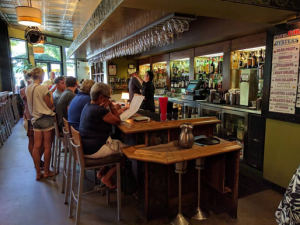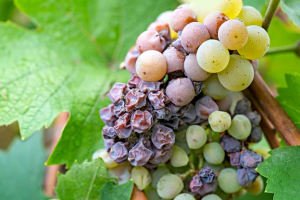As we wrote quite a few years ago, there was once a time that wineries gave away souvenir glasses if you stopped by and had a taste of their wines. In fact, their tastings were free, too! (And still are in a few places, believe it or not.) We’re reminded of this because we recently got rid of nearly all of the glasses we had collected on wine tasting trips over the years. Most of them were tiny and thick and we had too many; we don’t know why we kept them, except for the memories. A few were of high quality and we kept those, because…well, just because.
But it caused us to give some thought to the role glassware plays in the wine tasting experience.
 Photo courtesy of Kendall-Jackson.
Photo courtesy of Kendall-Jackson.
In some ways, the quality of the glasses is indicative of the winery owners’ perception of their wine and their customers. There are still some who serve tastings in small, clunky glasses. Maybe they just don’t care, or think their customers don’t care or that they couldn’t tell the difference anyway. Our experience is that many – certainly not all – people we meet in tasting rooms are reasonably familiar with wine and would appreciate a better glass.
At the other extreme, we’ve been finding some really fine glasses in some tasting rooms. They have copious bowls, no lip (that little bulge you sometime find) at all on the edge of the glass, thin stems and a great feel in your hand. If you turn the base of the glass slowly in the right light, you may find the mark of an Austrian or German glassmaker, such as Reidel, Spiegelau or Schott Zweizel. These wineries make, or at least think they make, great wine that deserve great glasses.
But does it really make a difference? Actually, yes it does. A glass with the room to swirl the wine will open up the aromas in a way that a poorer glass cannot do. And your ability to stick your nose in the glass as you sip will enhance your wine tasting enjoyment as well. There is a sensual pleasure to holding a well-balanced wine glass that you can only understand if you can compare it with the other kind. That’s why you don’t serve fine wine in jelly jars.
What if you don’t have exceptional wine glasses at home? Will it make a difference to the wine if you buy some and take it home? Not exactly. But wine glasses are part of the allure of wine tasting. So enjoy those fine glasses while you’re there!
Many of the gift shops at wineries will sell you their engraved glasses. If your intent is to have a souvenir of your trip, by all means go ahead. But if you are looking for quality glasses for your home, there are much better values to be had in the stores and on the internet.
And at the end of the day, if someone offers us Château Petrus in a plastic cup, we’ll be happy to take it.















